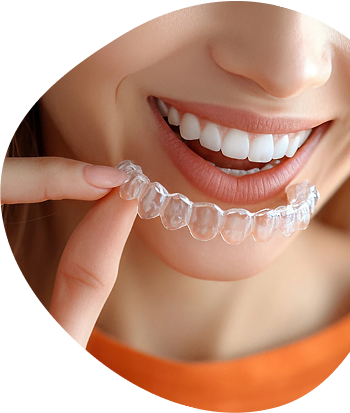One of the many things that we have to be careful of is losing teeth, especially if it’s already permanent. There are many reasons why one loses a tooth. Some of the causes may be improper oral hygiene or tooth disease.
Here at Crossroads Family Dentistry, we offer many solutions to this problem. For this kind of case, we highly recommend that you receive a dental bridge treatment. A dental bridge fills the gap between teeth by implanting a permanent false tooth or a crown.
Why do I need a dental bridge?
Having a noticeable gap in your teeth is frustrating, and it may even worsen if left untreated. Here are some of the risks of having a missing tooth:
- Change in bite and difficulty in chewing
- Possible development of Periodontal Disease
- Temporomandibular Joint Disorder (TMJ)
- Tooth grinding
- Tooth decay
If your Colorado Springs dentist recommends that you receive a dental bridge to replace your missing teeth, you will undergo several procedures for your treatment. For your first appointment, you will have to take an X-ray, an assessment and treatment planning, and preoperative photographs. These procedures will help us determine the best treatment and type of dental bridge that will suit you best.
Our dentists in Colorado Springs will guide you throughout the process and the materials that will be used for your dental bridge based on the assessment. The type of dental bridge that you may need varies depending on the number of missing teeth that require replacement.
Typically, there are two kinds of dental bridges that are applied to the gap – abutment teeth and pontics. Abutment teeth are crowns that are cemented to natural teeth. While a pontic is a permanent fake tooth used to fill the gap between teeth.
Types of dental bridge
A dental bridge comes with a lot of benefits. This includes improving your jaw’s functionality, preventing other teeth from moving, and improving your smile. It is imperative to choose the proper and correct type of dental bridge for your case.
Our dentists recommend several types of dental bridges to their patients. Each type uses varying materials and has different functionality depending on your case.
- Traditional Dental Bridge – This type uses two or more crowns that are connected to each other to keep the bridge in its proper place.
- Cantilever Dental Bridge – One pontic connects to the abutment tooth to fill a gap.
- Maryland Bonded Bridge – This type of bridge is usually recommended for those with an existing gap in their front teeth. It is made with ceramic or porcelain fused to metal material with a framework on each side of the bond to provide support.
- Implant-Supported Bridge – Similar to how traditional dental bridges are applied, but instead of adjacent teeth, a small titanium is attached to the jaw with the crowns connected on top of it.
To learn more about Crossroads Family Dentistry and our Dental Bridge services, contact us today at (719) 596-3481 or visit our website.










.png)


